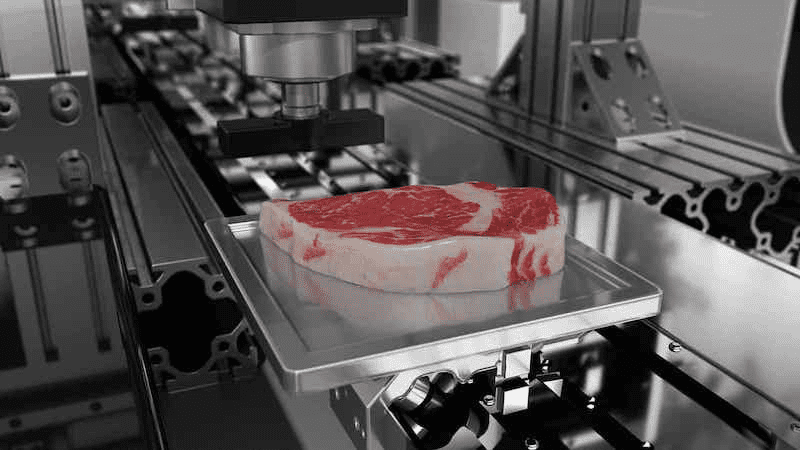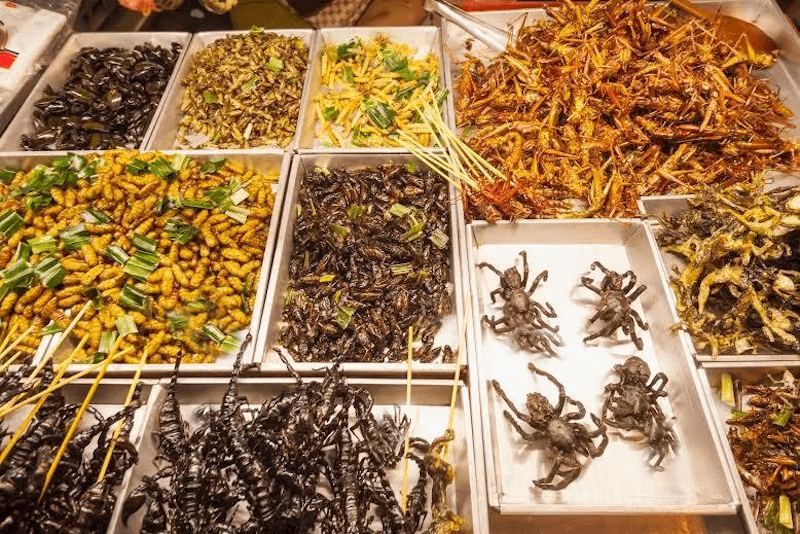
From the hunter-gatherer era to the advent of agriculture, food has evolved along with humanity, our diets have continuously adapted to our environment, culture, and technology. Today, we stand at the precipice of another monstrous transformation in the food we consume – the shift towards synthetic foods and alternative proteins. This change is driven by a combination of environmental concerns and technological advancements, pushing us to redefine traditional notions of food.
The concept of alternative proteins and synthetic foods might seem foreign or unappetizing to most, but think of it this way – several centuries ago, the idea of consuming a raw, red fruit plucked from a plant (now known as a tomato) was considered dangerous and even poisonous. Yet today, we can't imagine a world without tomatoes. Similarly, if those that be have their way, alternative proteins and synthetic foods are poised to become commonplace kitchen staples in the not-so-distant future.
Synthetic foods, produced using artificial or chemical methods, stand at the crossroads of benefit and potential harm for human health. They hold the promise of combating food shortages and enhancing nutritional intake, thus playing a crucial role in our well-being. Moreover, their production is less dependent on natural resources like land and water, which can lead to improved environmental sustainability. However, the phrase 'Good for us or Killing us Slowly' aptly summarizes the lingering uncertainties about these foods. The long-term effects of their consumption remain largely unknown, leading to fears that certain synthetic ingredients could slowly damage our health. Along with these health concerns, there are also ethical issues and cultural acceptance challenges tied to synthetic food production and consumption. Hence, while the benefits of synthetic foods are appealing, it is essential to continue rigorous research to ensure their safety and long-term impacts on health.

Alternative proteins are protein sources that are not derived from traditional livestock like cows, pigs, and chickens. Instead, they come from plant-based sources, insects, algae, and even lab-grown meat. The drive for alternative proteins can be attributed to various factors including corporate interest, political interests and food conscious developers seeking out protein sources that are leaner, lower in cholesterol, and free from antibiotics and hormones.
Environmental sustainability is another major driving force. Traditional livestock farming is resource-intensive, contributing significantly to greenhouse gas emissions, deforestation, and water pollution. Alternative proteins may present a more sustainable solution, requiring less land, water, and energy to produce.
It's also about ensuring food security. With the global population expected to reach 9.7 billion by 2050, we need to find efficient and sustainable ways to feed everyone. Alternative proteins can play a pivotal role in this, offering a way to meet the increased demand for protein without depleting our planet's resources.
Lab-grown meat, also known as cultured meat or cell-based meat, is a type of alternative protein that is produced by culturing animal cells in a lab. This technology has the potential to revolutionize our food system, offering a sustainable and humane alternative to conventional livestock farming such as factory farms.
The process starts with obtaining a small sample of animal cells, which can be taken from a live animal without causing harm. These cells are then placed in a culture medium that provides them with the necessary nutrients to grow and multiply. Over time, these cells form muscle tissue, which is the main component of meat.
The concept of lab-grown meat may sound like science fiction, but it is already becoming a reality. Companies like Memphis Meats and Mosa Meat are leading the way, developing cell culture technologies to produce lab-grown beef, chicken, and even seafood. While there are still challenges to overcome, including reducing production costs and scaling up the process to meet implied demand, lab-grown meat holds significant promise for the future of food.
Biotechnology and food science are playing a crucial role in the evolution of our diet and the food we eat. Through genetic engineering, scientists are able to modify the DNA of organisms to enhance their nutritional profile, increase their resistance to pests and diseases, and improve their taste and texture. This has led to the creation of genetically modified organisms (GMOs), which are now common in our food supply.
Artificial flavors are another product of food science. These are compounds created in a lab that mimic the taste and smell of natural foods. While they have been around for a long time, advances in technology are enabling the creation of more complex and authentic flavors, without the carcinogenic effects to humans.
The field of food science is also delving into areas that were once unimaginable. For instance, researchers are exploring the possibility of creating foods that can modify our gut microbiota to promote health and prevent disease. These developments are redefining our understanding of food and how it powers our bodies.
In vitro techniques are not just being used to produce meat. They are also being employed to create cultured dairy products. Companies like Perfect Day are using microflora – yeasts and bacteria – to produce dairy proteins without the need for cows. These proteins are then used to create a range of dairy products, including milk, cheese, and ice cream.
Cultured dairy products offer several advantages over traditional dairy. They can be produced more sustainably and humanely, without the need for large herds of livestock. They can also be customized to meet specific dietary needs, such as lactose-free or high-protein options.
Moreover, cultured dairy products can be produced consistently, regardless of environmental conditions. This makes them a reliable source of nutrition in the face of climate change and other threats to food security.

Artificial flavors and GMOs are two of the most controversial aspects of modern food science. While they offer numerous benefits, they also raise concerns about health, ethics, and environmental impact.
Artificial flavors, for instance, enable us to enjoy a wide variety of tastes and aromas. However, they have been linked to health problems such as obesity and heart disease, leading to calls for more natural and less processed foods.
GMOs, on the other hand, have the potential to enhance the nutritional profile of foods and increase crop yields. However, their long-term effects on health and the environment are still not fully understood. There are also ethical concerns about the ownership and control of genetically modified seeds.
Despite these controversies, artificial flavors and GMOs are likely to continue playing a significant role in our diet, due to their ability to meet the growing demand for food in a sustainable and efficient way.
Clean meat is another term for lab-grown meat, reflecting its potential to offer a cleaner and more ethical alternative to farmed meat production. It eliminates the need for animal slaughter, reduces the risk of foodborne illnesses, and significantly lowers the environmental footprint of meat production.
However, clean meat is not just about creating a replica of traditional meat. It opens up new possibilities for customization and innovation. For instance, it could be possible to engineer meat with a higher content of healthy fats, or to create novel meat products that don't exist in nature.
While clean meat is still in its early stages of development, it has already attracted significant investment and interest. As the technology matures, it could fundamentally change the way we produce and consume meat.
3D food printing is another technology that could redefine our diets. It involves using 3D printers to build up layers of cellular materials that are edible, creating food with a specific structure, texture, and nutritional content. This technology could enable us to create personalized meals that meet our individual nutritional needs, design meat for specific dietary blood types or to create aesthetically pleasing food for the culinary arts.
Nutrient fortification is a more established practice, involving the addition of vitamins and minerals to foods to enhance their nutritional value. This has been instrumental in combating nutrient deficiencies and promoting public health. In the future, we could see more targeted and personalized forms of nutrient fortification, based on our individual dietary needs and genetic profiles.
Together, 3D food printing and nutrient fortification could help us to create foods that are not only delicious and visually appealing, but also perfectly tailored to our health and wellbeing.

Tissue engineering and fermentation technologies are two other areas of food science that are contributing to the evolution of the food we eat.
Tissue engineering, as mentioned earlier, is being used to produce lab-grown meat. But it could also be used to create other types of food, such as fish, poultry, or even exotic meats that are currently rare or endangered.
Fermentation technologies, on the other hand, have been used for centuries to produce foods like beer, wine, cheese, and yogurt. However, modern biotechnology is enabling us to harness the power of fermentation in new ways. For instance, companies like Clara Foods are using yeast fermentation to produce egg proteins without the need for chickens.
These technologies are not only creating new possibilities for food production, but also helping us to understand and appreciate the complex and fascinating world of food science.
Edible insects are another alternative protein source that is gaining attention. While they might not be a staple in Western diets, insects are consumed by about 2 billion people worldwide, particularly in Africa, Asia, and Latin America.
Insects offer several advantages as a protein source. They are rich in protein, vitamins, and minerals, and they have a much lower environmental footprint compared to traditional livestock. They can also be farmed in urban environments, offering a local and sustainable source of protein.
Novel foods, which are foods that have not been consumed to a significant degree by humans in the EU before 1997, are another unconventional protein source. These include foods derived from new processes, such as nanotechnology, or foods that are being introduced into the EU from other countries like chia seeds or baobab fruit.
While these sources of protein might seem unusual or exotic to some, they are likely to become more familiar as people seek to diversify their diets and reduce our environmental impact.

Functional foods are foods that have a potentially positive effect on health beyond basic nutrition. They can play a role in reducing or managing the risk of certain diseases and health conditions. Examples of functional foods include probiotics, which can improve gut health, and omega-3 enriched foods, which can support heart health.
Plant-based alternatives are another important part of our evolving diet. These are foods that are designed to replicate the taste, texture, and nutritional profile of animal-based foods, but are made entirely from plants. They include plant-based meats, milks, cheeses, and eggs.
Plant-based alternatives offer a way to enjoy the foods we love, while reducing our environmental impact and improving our health. They are also a great way to introduce more diversity into our diets, and to explore new and exciting flavors and textures.
Algal proteins are another underutilized source of alternative protein. Algae, including seaweed and microalgae, are rich in protein, fiber, vitamins, and minerals. They are also a sustainable source of protein, requiring minimal land and water to grow.
While algal proteins are not yet a common feature in Western diets, they have been consumed in other parts of the world for centuries. For instance, seaweed is a staple in many Asian cuisines, while spirulina, a type of microalgae, was consumed by the Aztecs and other cultures.
As we seek to diversify our protein sources and reduce our environmental impact, algal proteins have the potential to become a more prominent part of our diets.
Consumer acceptance is a crucial factor in the success of synthetic foods and alternative proteins. While these foods offer numerous benefits, they also represent a significant departure from traditional eating habits, which can be a barrier for many people.
However, research suggests that consumers are becoming more open to trying these foods. A 2020 survey by the International Food Information Council found that 41% of consumers are likely to try lab-grown meat, while 30% are likely to make it a regular part of their diet for persons under 30.
Education and transparency will be key in promoting consumer acceptance. Consumers need to understand the benefits of these foods, as well as the science and technology behind them. They also need to be assured of their safety and quality.
It's also important to make these foods accessible and appealing. This means creating products that are not only nutritious and sustainable, but also accepted, safe, tasty and affordable.
The evolution of diet is a testament to our ability to adapt and innovate. From lab-grown meat and algal proteins, to 3D food printing and genetically modified organisms, we are redefining what it means to eat in the 21st century.
Synthetic foods and alternative proteins are more than just a culinary novelty. They represent a new approach to food, one that is grounded in science, sustainability, and health. They offer a way to feed our growing population without depleting our planet's resources, and to promote health and wellbeing through personalized nutrition.